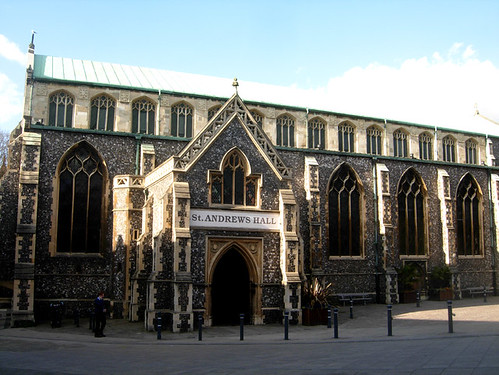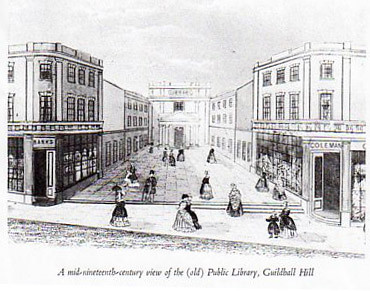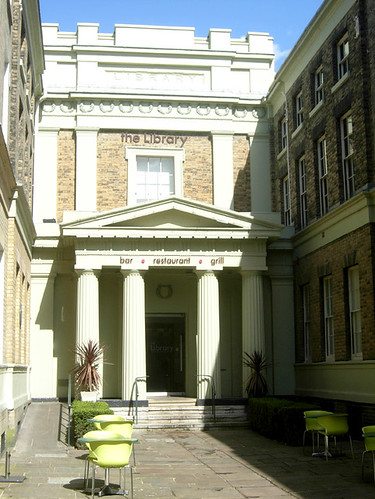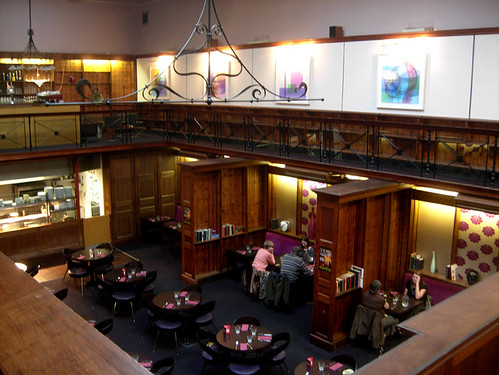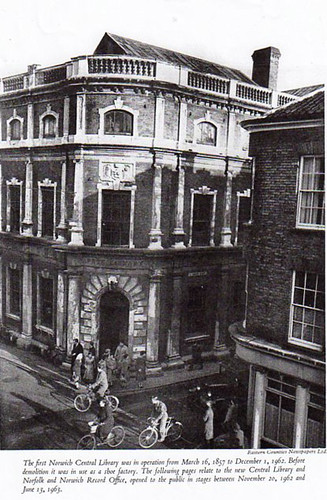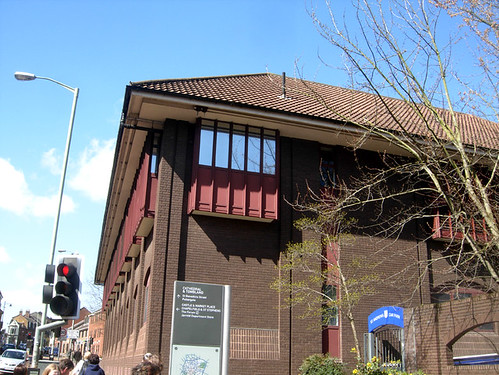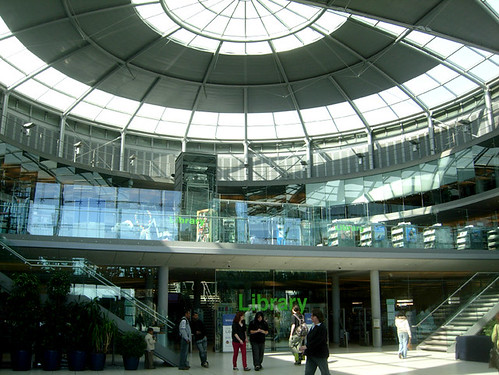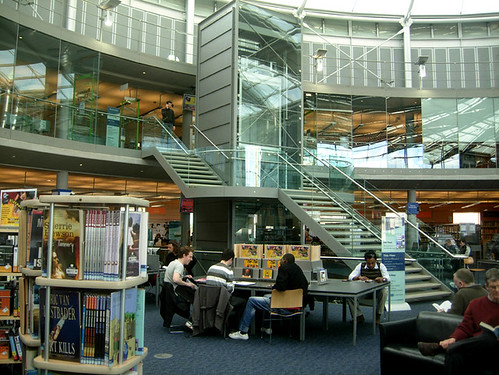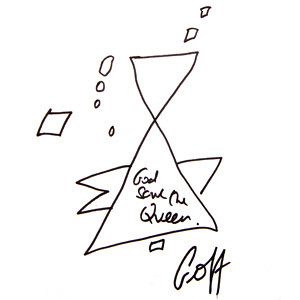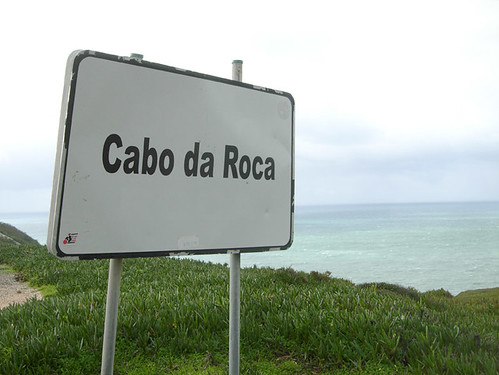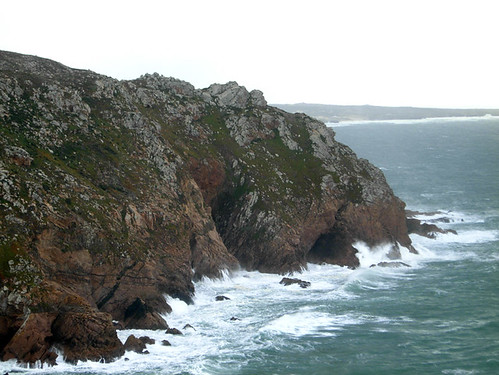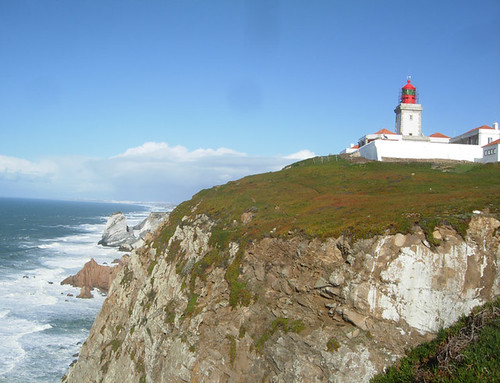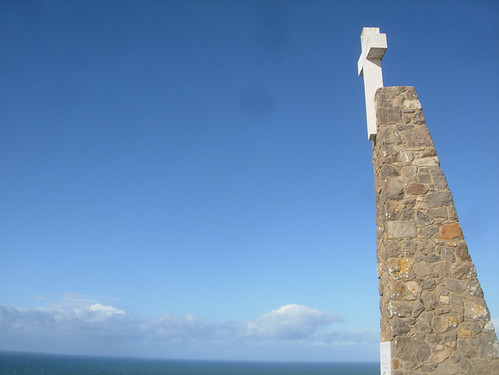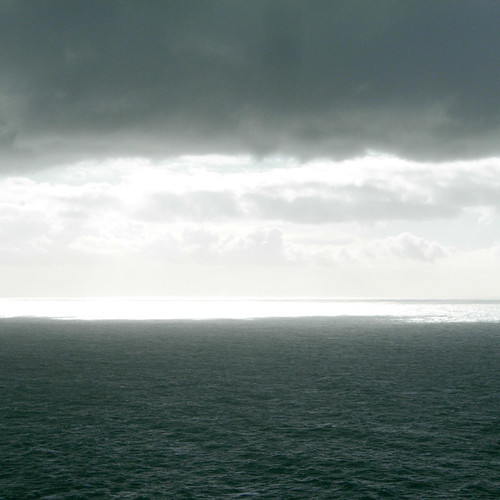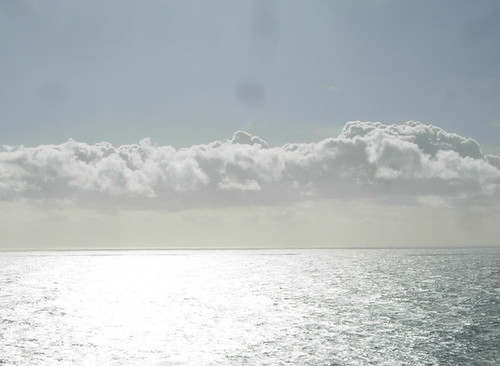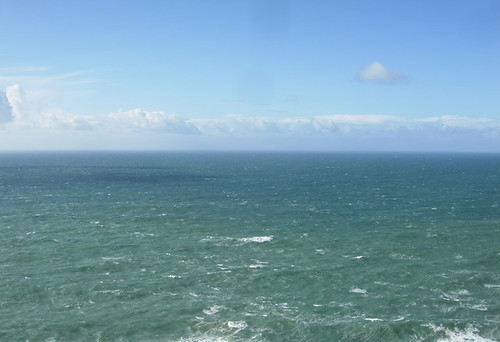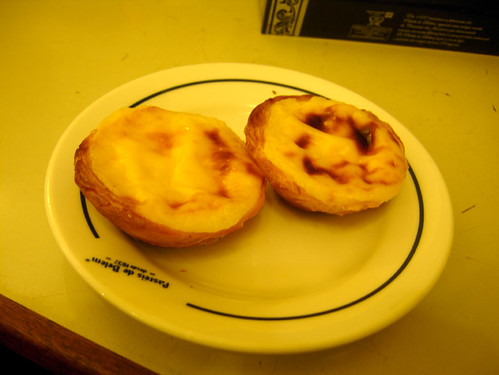I took these aerial photographs on a flight from London to Bologna.



Things I do
I ask people to draw maps...
· Draw the World
· Draw Europe's nations
· Crowdsourced Continent maps
I make map cards:
· See map cards
And other things I write about:
· Little moments from travel
· London art & museums
· Football with foreign fans
· London shop geography
About this blog
Moscow, Moskau
Saturday, May 16, 2009With all eyes on Moscow tonight, I can't stop singing Moskau by Dschingis Khan - brilliant.
Enjoy Eurovision!
Labels: Dschingis Khan, eurovision, Russia
Eurovision in Italy...
Friday, May 15, 2009They say there's no interest in Italy for Eurovision, but I spied:
- This year's Hungarian entry blaring out of a car stereo
- A full page article about Eurovision including a picture of Svetlana wearing Fuck The Crisis t-shirt
- Lulu's Boom Bang a Bang being used to advertise fruit juice.
It's Eurovision week
Monday, May 11, 2009Eurovision week has arrived, and all the joy it brings. This year, I've decided to skip watching the semi-finals, and just watch the final live (I'll watch them afterwards, obviously). By doing this, all the acts are a surprise, just like when I first starting getting into Eurovision (the 1990s).
So, to achieve this, I'm on holidays in a Eurovision-free zone: Italy. Anyway, without further ado, here's my Eurovision ru-down for 2009.
Semi-Final 1
- Montenegro
Utterly silly, camp nonsense, and a magical way to open to the show. In a word: fun - Czech Republic
Gypsy rap that's much more ridiculous than it should be - Gypsy.cz is good enough in his own right. In a word: disheartening - Belgium
Elvis look-a-like claiming Elvis is stealing his act. In a word: genius. - Belarus
Dull rock ballad. In a word: boring. - Sweden
The first of this year's opera-pop entries, with added camp. Malena is brilliant, but this is like asking Judi Dench to do an Iceland advert. In a word: kitsch. - Armenia
Novelty tune, novelty dance routine, fabulous novelty costumes & hats. In a word: routine. - Andorra
Catchy guitar pop tune that bounces merrily along. In a word: Nice. - Switzerland
Pet Shop Boys, with guitars. In a word: unsung. - Turkey
Likeable ethnopop dancing fluff, and hurrah for it. In a word: pulsey - Israel
With singers from both sides of Israel, this could be corny. But it will be alive on stage. In a word: heartfelt. - Bulgaria
The second of the opera-pops, with added ethno-warbling. In a word: desperate - Iceland
Is it true? A moving ballad about loss and ending? How very Iceland in 2008/2009 financial year. In a word: moving - FYRO Macedonia
Not memorable in the least. In a word: forgettable. - Finland
A happy poppy dance song. About failure. Brilliantly Finnish. In a word: misanthropic - Romania
Pop poppy about Bucharest's banging babes. In a word: tonic&lime. - Portugal
Sweet, lovely, Portuguese ditty. In a word: obrigado. - Malta
Third time lucky for Chiara with this ballad? In a word: handjabs - Bosnia-Herzegovina
Delightfully rousing Balkan ethno-rock ballad. In a word: revolutionary
- Croatia
An Aegean-esque folk song supplanted to Dalmatia. Nice, but nothing new. In a word: lully - Ireland
I say it's Ireland's best entry in years. Girlband rockpop with nice line in shimmying. In a word: etc - Latvia
Russia kraut-rock. Big in the hall, undoubtedly. In a word: null - Serbia
Big-haired bloke and his old mate singing a daft song about shoes. In a word: overdone - Poland
Nice ballad, delivered well. I'd like to like it more than I actually do. In a word: true - Norway
Sweet love song hidden within some muscular Vikings-in-the-Urals fiddling. Great. In a word: winner? - Cyprus
Sweet, swooshing story song. Maybe too big for its performer, sadly. In a word: fleeting - Slovakia
A dull, plodding duet. In a word: snoozy - Denmark
It is Ronan Keating, in disguise. Good, if you like that kind of thing. (And plenty do). In a word: commercial - Slovenia
Violins ahoy, and a singer trilling behind a screen. Did you expect her to be blonde? I didn't! In a word: crescendo - Hungary
It's called Dance With Me, but should be Camp Like Me. In a word: gay - Azerbaijan
A catchy dirge. In a word: infectious - Greece
Gym-toned Sakis leads an aerobics class, while singing a song. Olivia Newton-John for the naughties. In a word: flex - Lithuania
It's sweeping, impressive, and he wears a nice hat. The hat is the thing I like best. In a word: sweet - Moldova
Great red boots for Nelly, the singer of this Slavic-ethno-pop dancing riot. Nelly! In a word: bonkers - Albania
A pseudo-thumping dance tune with nobody dancing. In a word: hopeful. Sadly, it may be forgotten because here comes... - Ukraine
Riotious, surreal, almost nasty. And all the more amazing for it. BOM! This will have a huge performance. In a word: bumpy - Estonia
Delightfully ethereal song, good contrast to what comes before. All it needs is some Kate Bush-esque hand waving. In a word: mystical - Netherlands
Three camp old dears in shiny suits belt out a shiny song called Shine. In a word: shiny
- France
Wonderfully dramatic, brooding chanson ballad. Classy. In a word: superb - Russia
Some lady warbling about her mother, or is it Russia? Who knows, who cares? In a word: orphan - Germany
Novely song, sounding like Mambo No 5, with Dita Von Teese in the background. In a word: Inexplicable. - United Kingdom
She's been down, down so long. And now the song's in your heard for the rest of the day. Strong performance expected. In a word: classy. - Spain
The super sound of a fun night in Fuengirola! In a word: fiesta
And that's it. Who will win? My money's on Norway, and I'd love to see UK, Spain, Estonia, Ukraine, Belgium and Ireland do well.
Labels: eurovision
Fabstraction
Tuesday, April 21, 2009 Pretty, isn't it? And it has a pretty name too - Fabstraction.
Pretty, isn't it? And it has a pretty name too - Fabstraction.
The pic above isn't one of those I saw at the Alan Cristea gallery, but it is similar. Vertical lines of bright, vibrant colours skirt down the canvas and descend into an abstract messiness at the base of the picture. Lovely.
More about Ian Davenport - at Waddington Gallery, on Wikipedia.
Also a video about some of his work on display in Warwick University.
UK Eurovision Preview Party
Saturday, April 18, 2009Last night's Eurovision Preview Party was a great success. There was a real fun, friendly, positive and enjoyable atmosphere. Here's a run-down:
Great vintage performances from previous entrants Nicki French, Friðrik Ómar, Jessica Garlick and Imaani.
Imaani is 8 months' pregnant, well done to her for coming along to perform! Jessica Garlick still sounds stunning, and Friðrik is a great fun performer giving us an acapella This is My Life which happily became disco-dance-tastic in the final chorus. (Jade Ewan - take note).
Nicki French is a national treasure, and should be preserved in aspic.
Polish singer Lidia sung well with two nice songs. Bulgarian Krassimir seemed like a nice, sweet guy, but a little uncomfortable on stage.
Romanian Elena really sells her song well and she spins around a lot. Awesome hair extensions from her. A troupe of dancing Balkan girls strutting around stage on Moscow will be a treat from her.
Icelandic Johanna was great - very strong singer and she delivers her song well.
Cypriot Christina proved she can sing - and sing well. Her Eurovision song is a little too big for her, as she seems quite timid and nervous. Hopefully the supportive and excellent reaction she received will help boost her confidence.
Ireland were great - they performed their song with great energy and enthusiasm. They just played one song, which I felt was a shame as the crowd were really loving them. Watch:
And then: Ukraine
Svetlana Loboda came on stage aloft on the shoulders of one of her 4 very hunky, very fit dancers. They all then proceeded to give a performance which beggared belief - muscular, powerful, dynamic, energetic and frenetic.
The dancers - chests and arms bared - were a surreal mix of rabid thuggish soldiers and gay boy harlequin marionettes. They performed Be My Valentine with such gusto, it will surely figure high in the placings in Moscow. They then performed another song with Soviet-style marching and flags depicted the mascot of the 1980 Moscow Olympics.
And then the dancers donned t-shirts and then took them off again. And then I got one (a t-shirt, that is). And then they proceeded to climb about the stage. And then writhed about. And then flexed their muscles. And then started to take bits of clothing off. And then we all fainted...
Watch for yourself - this is Svetlana's encore performance of Be My Valentine
Libraries in Norwich - a history
Wednesday, April 15, 2009I went to Norwich last week, on a whim. Having read that Norwich has the busiest library in the UK, being a library fan, I decided to go to see it for myself. I also learned that having opened in 1608, Norwich's library is among one of the oldest public libraries in England. So, the day was set for a fascinating day of library encounters.
Before I went, I had a look in the Royal Geographical Society's Foyle Reading Room at some old maps of Norwich - dating from 1946, 1914, 1910, 1830, 1834 & 1766. The later three showed two library sites, so I set off to find out what was there now.
The first Norwich library was established in 1608. Three rooms of a house belonging to Jerrom Goodwym, a swordbearer, were converted into a library for use by visiting preachers in a building adjoining this, St Andrews Hall. The library stood here for 193 years.
This building housed a private subscription library, which also doubled as Norwich's library for some time, between 1837 and 1976. The building is now a tastefully renovated restaurant.
In early 19th century, Norwich was dubbed the "Athens of England" for its intellectual life and society. So there was call for a second library, and in 1857 another library opened at this building on St Andrew's Street.
The owners, sadly, could not find a suitable notary to open the building (they had asked the Duke of Cambridge, Lord Stanley, Gladstone, Lord John Russell, and even William Ewart, a well-known library campaigner).
Apparently, this was the UK's first building specifically designed as a library. It's now gone, demolished. The site on St Andrews Street stood from March 1857 to December 1962.
The library then moved to the site it currently occupies - although the building has changed. It burned down in 1994 due to an electrical fault. Here's what it looked like inside, sometime in the 1960s.
And now, the library is a bright, open, airy place, all glass and light. It's laid out more like HMV than a library, and has Council information, CDs, DVDs, books, internet and local archives all on one site. And the books are good - I noticed an architecture book
I thoroughly enjoyed my day in Norwich, and its libraries. Here's hoping it continues to have success for another 400 years.
Litter on beaches
Tuesday, April 14, 2009I was right when I said that Chesil Beach was full of rubbish, with a coastal litter survey for the Marine Conservation Society today finding 385,659 individual pieces of litter on 374 popular beaches. Over a third of that comes from the public.
Lots of worthy comment in this article about needing dedicated litter reduction plans, incentives to recycle and so on, but one thing that may help are a few bins. I don't remember seeing any on Chesil Beach (admittedly, it's probably not so easy to install them there).
Labels: beach, environment, UK
True or False Tour #2
Saturday, April 11, 2009A colleague who hadn't been on our True or False Tour / Pub Crawl in January asked me to do it again. I jumped at the chance - it was such fun putting it together.
So yesterday, I joined my colleague, and Susanna, Tobias & Caitlin from Sweden to see London, drink in some pubs, and tell lies and tell the truth.
I made a few changes this time around. Instead of having a helper, I was more like a traditional tour guide - except some of my stories were true, and some were false.
This gave me flexibility to make bits up as I was going along, and meant I wasn't talking for a very long time!
I'm happy to report it all went swimmingly well. Caitlin remarked at one point that I should do more of these tours, and I certainly am planning too.
So, in the meantime, if anyone wants a tour around London with fun true-or-false quiz game built in, let me know!
Labels: geography, history, london, pubs, True or False tour
Sounds Like Teen Spirit - Junior Eurovision film
Tuesday, April 07, 2009I went to a screening of Sounds like Teen Spirit tonight, the documentary about Junior Eurovision. And it's about so much more than Eurovision: it's about being a kid, becoming a teenager, learning about life and love and losing.
We meet 4 of the contestants in the 2007 Junior Eurovision - Giorgios from Cyprus, Marina from Bulgaria, Mariam from Georgia and band Trust from Belgium - and follow their preparations to go to Rotterdam and their time at the Contest.
These kids are a world away from what you expect - not precocious stage school brats, they're warm, funny, innocent, disarming, chatty, shy, lovely kids.
10 year old Yiorgios from Cyprus is a chatty, funny guy who gets teased at school, but loves to sing and dance and be in the moment.
Marina, from Bulgaria, lives in a good home, but misses her father who is divorcing her mother. At one point, she wonders whether it's better to have no feelings, as then you never feel pain.
Mariam, from Georgia, is delighted to represent her country and have its flag among Europe's others, even if her family's TV only works long enough to see her perform.
And Trust, from Belgium - three guys and 1 girl - are teenagers learning about love and being endearingly awkward adoloscents.
I loved this film - it was warm, funny, sad and absolutely delightful. Director Jamie J Johnstone does a wonderful job, bringing the kids' personalities out with a warmth and honesty which shines through. He approaches the show without any cynicism which gives the film real heart and affection.
Go see this - it is life-affirming and heart-warming. It will leave you smiling, and thinking, for hours, and whether you like Eurovision or not, you'll come with a sense of joy in performing, music and youth.
Junior Eurovision: the movie
Thursday, April 02, 2009Someone has made a film about Junior Eurovision - long since forgotten in the UK, but alive and kicking out East - and called it Sounds Like Teen Spirit. Goodness - it all looks rather jaunty. I've been invited to a preview screening next week so I shall report back.
Labels: eurovision, film
Roisin Murphy draws the world!
Wednesday, April 01, 2009I went out last night to the launch of Simon Henwood's new book. Simon Henwood - previously unknown to me - is the boyfriend of popdiva Roisin Murphy, and Roisin was DJing at the launch. So I popped along to hear her play some tunes.
In between spying the ridiculous Shoreditch types wearing outré clothing, I dug out my pen and pad and asked Dennis to draw the world and Sandro to draw Italy (always remembering my EuroGlobe & MyWorld projects, that's me).
But then a suggestion flashed my way from Henry & Dennis - go ask Roisin Murphy to draw the world. Could I? Would I? Should I?
It's a no-brainer. Of course I should. I drew my courage, held my breath and off I went. Once she finished swapping numbers with someone else, I tapped her shoulder.
Adrian - Hi, I wonder if you could do me a favour - I have a project where I ask people to draw the world. Would you do it for me?
Roisin - Yeah, sure (like it's the most normal thing in the world)
And so she did. So here's the world, as drawn by Roisin Murphy. It's surprisingly stark - no scaffolding, jaunty hats, no ostentatious glovery. But utterly delightful.
Draw the world, see the world
Monday, March 30, 2009I asked Itinerant Londoner Geoff to draw the world (for my MyWorld project) just before he left London to see the world.
And while the pen and pad was out, Geoff decided to be the UK-candidate for my EuroRevision Project. So here's Geoff's version of the UK.
Tree @ Natural History Museum
Thursday, March 26, 2009
Tree is the short and succinct name for a new permanent installation at the Natural History Museum.
Erected to commemorate 200 years since Charles Darwin's birth, and installed in the ceiling of a gallery, tree takes its concept from the Darwin's tree of life. It's a wooden, cross-section of a 200 year old oak tree with branches stretching across the gallery's ceiling.
Most impressively, at over 17 metres long, Tree will be the Natural History Museum's largest botany specimen on display.
I was impressed by the way the artist Tania Kovats managed to mix her artistic touch with the Museum's scientific endeavour. I liked how as I looked at the tree, I started to consider the science and its 'natural history'.
Hiberno-English and Irish words
Tuesday, March 24, 2009As it was St Patrick's Day last week, many of my recent conversations have been about Ireland and Irish-ness, with accent nearly always the most popular subject.
I was reminded of a print out I had with 22 examples of Hiberno-Irish dialect - and while I agree with most of the examples, some are very 'stage leprauchan'.
The examples are:
1. Is it Commerce he's studying in College?
2. Peter asked John was he at the match on Sunday and did he see Sheila there.
3. They spoiled her as a child and she's a very bold girl in school.
4. How long do you know Margaret?
5. It's a right mess he's after making of it.
6. I saw two sugawn chairs and a pine table for sale.
7. My brother learned me how to drive.
8. Did you ever hear her talking about anything only study?
9. I caught a fine salmon but the rod broke on me and it got away.
10. He has no sense for an eighteen year old: I saw him out walking yesterday without a coat and it raining.
11. He's hopeless to study now: he usen't be like that when he was younger.
12. Is it Sunday the match is on?
13. See is it on the shelf.
14. Are you going to town? I am. Is it a message you are wanting?
15. He's dead sound, a real sincere young fellow altogether.
16. We were here ages before he came.
17. How can she study with the state she's in?
18. I was just after putting down the phone when I realised I forgot to tell you about the party.
19. Her face was all swollen with the mumps.
20. I do be falling over that yoke about ten times a day.
21. I'm on the pension nearly three years now.
22. Every morning I do be after missing the bus.
Numbers 1, 5, 9, 12 and 14 use an odd-for-English sentence structure, mainly (I think) as it comes from a direct translation from Irish (Gaelic).
3, 11, 14 and 20 have words for other words which may be specific to Hiberno-English: bold for naughty, the contraction usen't, message for shopping and yoke for thing. These are my favourite, and there are many more, such as:
press for cupboard
'give out' for 'tell off'
'copy book' for 'note book / jotter'
History of my House - Southwark local history library
Sunday, March 15, 2009I've been digging more into the history of my house. The street does not appear on the 1911 census, so I surmised it either had a different name in 1911 or didn't exist.
Looking at some old maps in the RGS Reading Room brought a little enlightenment - I saw a map from the late 1800s with no street, and one from 1920 with a street. So, it was built sometime at the beginning of the 20th century, making it Edwardian, or (very) late Victorian.
I ordered Godfrey edition maps from 1894 and 1914 which confirmed this (fantastically swift customer service from Alan Godfrey Maps, by the way).
Southwark's local history library - temporarily relocated to Peckham due to renovation - had an index of streets which indicated that street was given its name in 1911. So, the street is 98 years old.
Much more excitingly, in the local history library, I found out the names of all voters who lived in the house from electoral registers.
The earliest I can trace on the street is 1913, but for the first few years my house number is not used (maybe the house was empty? Or maybe the occupants didn't have the right to vote).
And then, from 1918 onwards, these people lived in my house:
- 1918 - 1929 - Daniel & Clara Ayling
- 1929-1931 Frederick Jordan, Alice Jordan & Frederick Thomas Jordan
- 1931-1938 Alice Jordan & Frederick Thomas Jordan
- 1938-1939 Alice Jordan
- 1939-1940 Thomas Williams & Ellen Alice Williams
- 1940-1945 - ?
- 1945 - 1959 - George & Amelia Fleming
- 1960-1965 - William & Elizabeth Coulson
- 1965-1975 - William Coulson
- 1975-1989 - George & Rosa Knott, with Carole Knott & Christine Knott
Sadly when I got to 2008, I expected to find my name on the register (I was getting very excited about it) but I wasn't there! I had taken myself off the list to reduce junk mail. I may reverse that decision for posterity purposes.
My next stop is the London Metropolitan Archives to find out more about the building of the street - and to see if I can work out why it is Ambergate Street.
Labels: geography, history, history of my house, london
History of my House
Sunday, March 08, 2009I recently read Home: by Julie Myerson (she's been in the news recently for her book about her son's drug abuse
- but Home's infinitely more interesting). In it, she traces the history of everyone who lived in her Clapham home.
And it's fascinating. I was engrossed and inspired - I suddenly wanted to find out more about my house.
I live in Kennington in south London, on a street called Ambergate Street. It extends on from one called Alberta Street (by the way - please don't stalk me, thanks).
Given the name Alberta, from Albert, we've always assumed the street was Victorian. I've wondered about the name Ambergate - Ambergate is a village in Derbyshire, could it be named after that?
I do know that prior to there being a street here, there was a zoo - the Royal Surrey Zoological Gardens. Now all that remains is a small park called Surrey Gardens.
So from a zoo to a quiet residential terrace - there's a lot to find out about!
Labels: geography, history, history of my house, london
Cabo da Roca - Europe's most westerly point
Wednesday, February 18, 2009Cabo da Roca is Europe's most westerly point. Well, Cabo da Roca is continental Europe's most westerly point. Europe's most westerly point is in Ireland, Iceland, the Azores or French Guiana - depending on perspective.
Getting there is remarkably easy - it's something of a tourist attraction, of course - take a train to either Cascais or Sintra and then bus 403 from there along winding roads through green countryside.
There isn't much at Cabo da Roca - a pointless tourist office (I wandered in, they ignored me), a restaurant (empty) and a tourist souvenir shop (nothing but usual stuff). A lighthouse, built in 1772, is closed.
Two monuments can be seen - one (oddly) to the Rotary Club sits a little distance back from the headland, and the other juts proudly into the sky, with a cross and an inscription: Onde a terra termina e o mar começa... / Where the land ends and the sea begins...
But Cabo da Roca's beauty isn't in buildings. All around you is the world's grand scale and beauty. Looking down the cliff at the crashing waves and spuming foam of the Atlantic, the full brunt of the ocean hits you. It's unrelenting, it never stops - the tide keeps on coming.
The horizon remains constant, always there, always distant. You could be anywhere, but this is somewhere. My trip benefitted from a sudden change of weather - from drizzly, grey and dull to blue, shining and resplendent.
Cabo da Roca is peaceful despite the fierce ocean, green with sea-gorse and nature's geography at its best.
Labels: beach, Cabo da Roca, geography, holiday, photography, Portugal, seascapes, travel
Observations on Portugal
Tuesday, February 17, 2009- Itinerant Londoner was right - the food in Portugal is disappointing. Try as I might, I did not find mijas on the menu, and instead was left with oily, greasy and largely flavourless food. Once or twice, I did think "yes, it's stodge, but glorious stodge" a la Nigella, but that was rare.
- It struck me that while the high-end restaurants may have brilliant food, more commonplace, everyday cafés and such churned out basic, unadorned food. A bit like the food at an Irish wedding - plain and simple, nothing that'd scare that aunties and uncles.
- Cakes, buns and tarts, however were divine, especially the pasteis de nata and pasteis de Belem (above).
- There are a lot of pharmacies in Portugal. Lisbon seemed to have one at every turn.
- My favourite of Lisbon's gay bars were Setimo Ceu in Barrio Alto - ace music, friendly staff and a cool magazine-collage wall - and Max in Principe Real, unadorned, unpretentious and friendly.
- My favourite Metro stop (in Porto) was Estadio do Dragao - simply for the phlegmatic tongue-twisting way it is pronounced. In Lisbon, I quite liked Marques do Pombal as it sounded like Marques do bumhole. (Mature, I know)
- My very favourite things were: azulejos and seeing Cabo da Roca - more of this later.
I'm going to Portugal
Tuesday, February 03, 2009Tomorrow, all being well (snow & Ryanair), I'll be in Portugal.
I'm flying to Porto, staying there one night, then on to Lisbon, staying 5 nights, daytripping to Fatima, Sintra, Cascais, and then back to Porto for one last night.
I know little about Portugal, and I think I chose to go there simply as I'd not been before. So what to do?
Well, two tasks have sprung to mind. Itinerant Londoner has complained about Portugal's food, so I want to see if I can find some worthwhile and delicious food.
I've already read about açorda, a garlicky bread stew which sounds yummy but looks less so, and migas, fried breadcrumbs mixed with pork, which, apparently, is "life-affirming".
Secondly, until now, the only Portuguese I knew is Bem Bom, from their 1982 Eurovision Song. So I checked out other song titles, and given they are the only Portuguese I now know, I'm going to use them as best I can.
Bem Bom - very good, Baunilha e chocolate - Vanilla & Chocolate, Sol de Inverno - Winter Sun seem easy enough to manage, but I'm not sure how I'll fit these into conversation:
Uma flor de verde pino - A green, pine flower
Menina do alto da serra - High ridge girl
O meu coração não tem cor - My heart has no colour
Let's see!
Labels: Portugal

